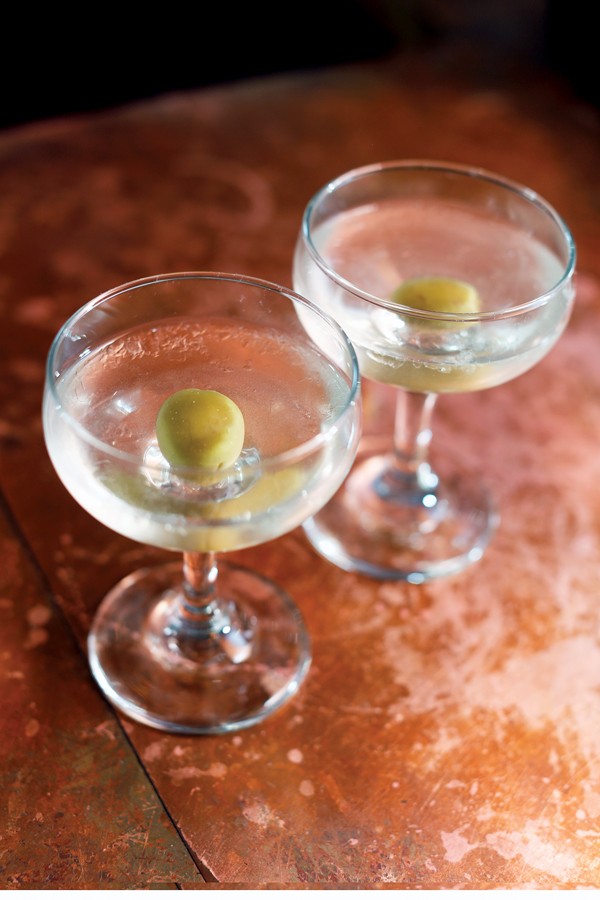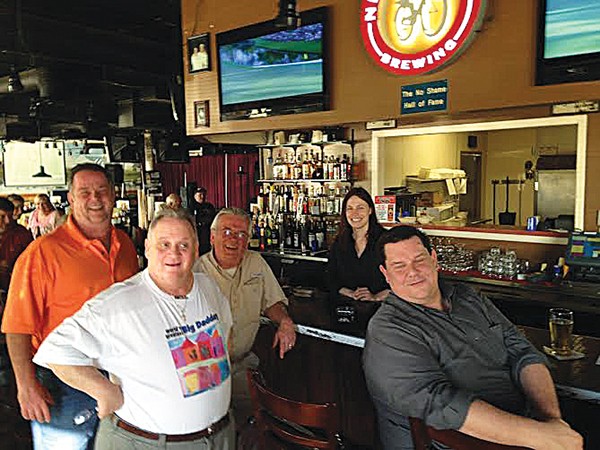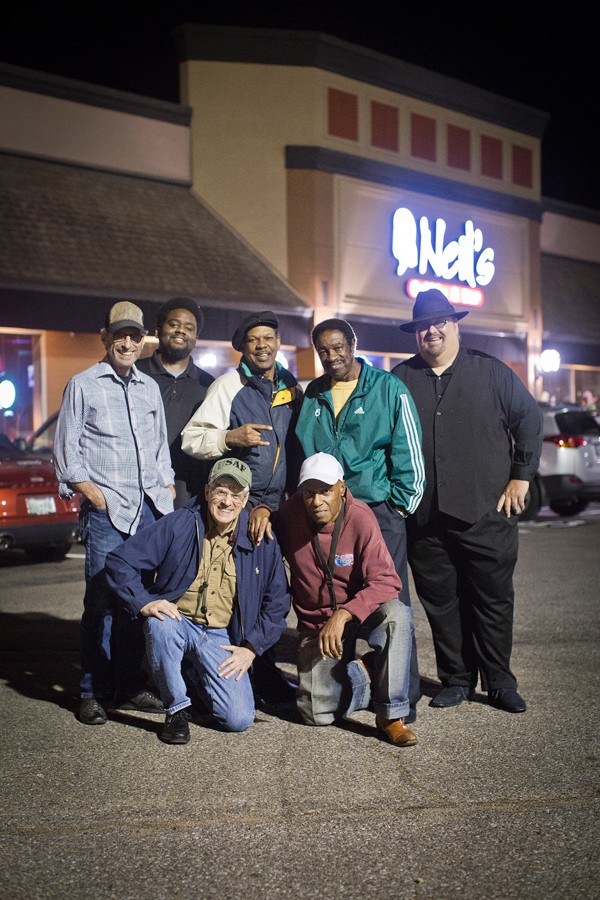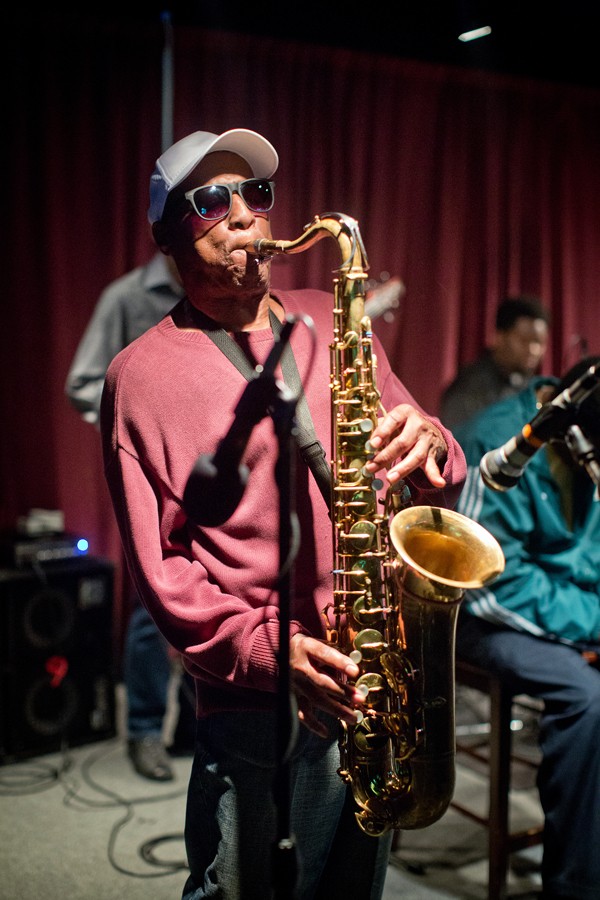“We live in public” is the relatively new expression used to describe life in the digital age. It’s the paper umbrella in a heady cocktail of warnings about privacy and the loss of meaningful human contact, and, as long as there’s not a good game on the big screen, it’s exactly the kind of thing that can spark lively discussion in a “public house” where everybody knows your name and, thanks to the alcohol being served, at least a few of your secrets.
Pubs have been popular R&R destinations since the prehistoric invention of beer goggles, and since that date, now lost to time and occasional bouts of over-consumption, a certain set of personality types have made a habit of frequenting their favorite watering holes on a more or less daily basis, at just about the same time, to order just about the same thing. These creatures of habit are known to all as “the regulars,” and who they are may surprise you. Or maybe it won’t surprise you at all. But in the spirit of “write what you know” this seemed like the perfect excuse to turn the Flyer‘s editorial staff loose on a subject near and dear to most of our hearts: bar life.
“Regulars are going to be different wherever you go,” says Cafe Keough owner Kevin Keough, who got his start in restaurants slinging drinks at bars like Automatic Slim’s and the Beauty Shop and who has poured many shots for this writer. “It can be like [the TV show] Cheers,” he says, allowing that in his time as a mixologist, he’s known a barfly or two, and at some level many of the quirky stereotypes about bar regulars are true enough. “But what you come to realize over time is that your regulars are really the normal ones.”
Every bar in town worth its margarita salt has its regulars, and this is by no means an attempt to cover all of them. But we think this eclectic sampling will cover the tab.
 Justin Fox Burks
Justin Fox Burks
Hannah Duke and Ashley Edge at Felicia Suzanne’s
Felicia Suzanne’s
Jerome Shipp, expeditor and waiter at Felicia Suzanne’s for 10 years (“next to forever,” he says), points out the regulars at the restaurant’s Friday-only lunches. There’s the table in the back, that table at the side, those few out on the patio. … He turns, then points to a threesome at the bar.
Mike Ratcliff, Ashley Edge, and Hannah Duke work nearby at APG Office Furnishings. Ratcliff and Edge can pinpoint exactly when they became regulars. It was October. The occasion: Ratcliff’s birthday. They estimate they stop by for lunch every other week, citing the food and the service as they give a nod to bartender Bri Silvio.
Edge says her preferred drink is a glass of Pinot Grigio. Ratcliff says his is Chardonnay, at which Edge dramatically stage whispers, “That’s because they’re out of White Zinfandel.”
“Hah!” Ratcliff exclaims. As for Duke, she professes to being only a semi-regular. “She’s very disciplined,” Edge notes. “And poor,” Duke adds.
 Justin Fox Burks
Justin Fox Burks
Part of the appeal of the Friday lunches are the 25-cent martinis. Shipp estimates they serve 100 of the drinks during Friday lunch. They come in a variety of options: either Burnett’s gin or vodka, straight-up or dirty, with orange or cranberry juice. The beauty of the Friday martinis is that they are one-ounce pours, so diners can indulge in more than one without getting too Mad Men.
Sitting at the end of the bar are Eiko Harris and Quiana Cox. They’re finishing up their lunches. “It’s a combination of the food and martinis,” Cox says, explaining the draw of Felicia Suzanne’s. Harris ordered the shrimp and grits; Cox opted for the catfish and fries. They shared an order of deviled eggs. As for those martinis, it’s with pineapple juice for Harris. Cox orders hers with orange juice.
Both of the women work in East Memphis. Harris is an attorney. Cox works for Hilton Worldwide. Cox says, “I come here whenever I’m off on Fridays.”
— Susan Ellis
Felicia Suzanne’s, 80 Monroe (523-0877)
 Justin Fox Burks
Justin Fox Burks
Phil Brown chats with Jackie, a fellow regular at Molly’s La Casita.
Molly’s La Casita
They’ve been pouring those famous margaritas at Molly’s La Casita since 1982, and the Midtown institution has a loyal gang of regulars who sidle up to the tiny, three-sided bar for conversation and libations.
“We probably have 50 people I would call regulars,” bartender James Ragghianti says. “There’s a group, for example, that shows up every Saturday, rain or shine, sometimes with 10 people, sometimes 20. I like my regulars,” he says, “because they tend to be unpretentious and comfortable to be around. No drama. I know their drink orders, and they know me.”
Jackie and Jasmine are two regulars who like to hit Molly’s on Monday. “I like this place because they know me and what I like. And I also like this crazy bartender,” Jackie says, smiling. Her drink of choice is the “Half and Half Margarita” — as in half frozen, half not frozen. “It’s for those who don’t want to have to wait for the alcohol to kick in,” she laughs.
But if you looked up the dictionary definition of a bar “regular,” it would probably have a picture of Phil Brown next to it. Brown, who’s now retired, has shown up every day at Molly’s for many, many years. Yes, every day. He’s such an institution that Molly’s has put a small nameplate on the bar at Phil’s seat.
 Justin Fox Burks
Justin Fox Burks
“If someone’s sitting in his seat, Phil’s not happy,” Ragghianti says. “But he’ll wait til they leave, then move. He’s polite about it.”
It’s safe to say Phil is a Molly’s institution. “If Phil doesn’t show up,” Ragghianti says, “the bartender on duty will call the previous day’s bartender and ask if Phil said he wasn’t coming in today. If he doesn’t show up, we get worried.” That, my friends, is a regular.
Phil himself is an amiable sort of fellow, and he likes to tell the story of the woman who came up to him one night and told him how happy she was to learn he was alive. Seems she’d seen the nameplate on an earlier visit and deduced that Phil had died.
Nope. He’s very much alive, as is the feisty bar crowd at Molly’s.
— Bruce VanWyngarden
Molly’s La Casita, 2006 Madison (726-1873)
Celtic Crossing
Listen closely to a gang of regulars at Celtic Crossing, and you’ll hear what gives the pub more Irish street cred than its perfectly poured pints of Guinness.
They huddle around two tables pushed together close to the bar, and their conversation and raucous laughter is punctuated with the undeniable musical accents of Ireland. Since Celtic Crossing opened in 2005, the Midtown pub has been home to this close-knit group hailing mostly from Éire but also from the U.S., Poland, and Belgium.
They’re found at their tables on certain weekdays during happy hour — drinking pints, sharing stories, making each other laugh — or laughing at each other. When all the members are present, their presence fills the bar with the good-natured rowdiness practiced in countless pubs across Ireland.
Seamus Loftus and Robert Cummins are usually in the thick of it on Mondays and some Sundays. The two own the Brass Door, downtown’s Irish pub that opened in 2011. But Midtown is home to them both, and, they say, Celtic Crossing “is our local.”
“I live about five minutes from here, and it’s where we come to get away from our pub,” Cummins says, with a laugh. “I like to come here and sit down with my pals and have a beer, shoot the breeze, and talk about the football games; that’s soccer games, you know.”
Loftus says the draw of Celtic Crossing is more than it being just generally Irish. He and the bar’s owner, D.J. Naylor, grew up in the same town, support the same football club, and are even related by marriage. The Brass Door is more like city pubs found in Dublin and Cork, he says, while Celtic Crossing is more typical of Ireland’s country pubs, which suits him just fine “because we’re country boys.”
One of the most recognizable regulars at Celtic Crossing is Mike Matthews. Yes, he has a singular presence on local television as the “WatchDog” on Channel 24. But at Celtic Crossing, he’s known by his booming voice, easy laughter, and ever-present cigar.
“I’ve had the opportunity to get to know the staff at Celtic over the years, and they really are my second family,” Matthews says. “Celtic is a place where I can talk with others or be alone with my thoughts and my cigars.”
Naylor can easily list his regulars and can easily point to their barstools. He says the connection for regulars is, simply, familiarity.
“People are enamored with the idea that they know most of the people around them,” he says. “They also like to know the person who is serving them and that they know what they drink.”
“A great bar is a place that feels comfortable,” Matthews says, “and I feel comfortable at Celtic.” — Toby Sells
Celtic Crossing, 903 South Cooper (274-5151)
 Bianca Phillips
Bianca Phillips
Bartender Dan Taylor and Jae Wells at the Pumping Station
The Pumping Station
Growing up gay in the tiny town of Belle Eagle, Tennessee, Jae Wells says he “had a lot of bad feelings about who I was.” But at age 18, on a trip to Memphis with members of the blues band he belonged to, he discovered acceptance at a gay bar.
That was 28 years ago, and that bar was called the Pipeline and was advertised as a “leather bar.” But for the past 13 years, the small storefront at Poplar and Cleveland has operated as the Pumping Station and, in recent years, has attracted a diverse mix of gay men (most not wearing leather) and often their straight or lesbian friends.
Outside the bar, a rainbow flag lets patrons know the Pumping Station is a welcoming bar. Inside “The Pump,” as its regulars call it, panels of the kind of textured aluminum one might find on the bed of a pick-up truck hang on the walls. On the patio, there’s a legendary wooden treehouse that patrons can climb, and in a throwback to its leather bar beginnings, the bathrooms are separated by “master” and “slave” rather than the more traditional “men” and “women.”
“I come here for the clientele and the owners. [Owners] Robert and Steve are fantastic people, and they’re so committed to our community,” says Wells, who owns American Standard Foundation Repair in Cordova. “And the clientele are pool-playing, beer-drinking people. I own a construction company, so I like to hang out with those kind of people.”
Wells, who rarely misses a Monday night pool tournament at the Pump and usually stops by on Friday or Saturday nights, says he appreciates how diverse the clientele has become over the years.
“Last Friday night, there were 20 or 30 gay men in their 40s and about the same number of males in their 20s. And the rest were straight women, four or five straight couples, and some straight men here as part of a party for their friend,” Wells says. “They were all having such a blast. It was such a sign of the times. Nobody cared who was gay or straight. You wouldn’t have seen that 20 years ago.”
Memphis was home to nearly 10 gay bars a decade ago, but most have since shuttered their doors. The Pumping Station has survived the test of time. Owner Steve Murphy says the exodus of gay bars is a national trend that has much to do with those changing times Wells mentioned.
“The younger crowd doesn’t necessarily feel like they have to go to a gay bar anymore. They go hang out with their straight friends at the Blue Monkey or wherever, and then they end up bringing their straight friends in here,” Murphy says. “The dynamics of gay bars have changed a lot.”
Murphy welcomes the diversity, and the Pumping Station is adapting and making improvements. Wells’ construction company is helping to renovate the bar’s back room into a smoking lounge, and by May 1st, the front section of the bar will become non-smoking.
“You have to change with the times. You have to be open to whoever walks in the door,” Murphy says. “We’ve always been like that, but people haven’t always realized that.”
— Bianca Phillips
The Pumping Station, 1382 Poplar (272-7600)
Rockhouse Live
Rockhouse Live is a homegrown music club, holding events throughout the week to keep regulars (and newcomers) busy — open-mic nights, karaoke, ladies’ night — and offers lots of live music on the weekends. It has only been open since August, but Rockhouse Live already has its crew of regulars, many of them holdovers from previous bars in the same building.
Owner Zach Bair says he opened Rockhouse Live because he didn’t see anything like it around Memphis; he touts the bar as having the largest stage in town, complete with a lounge area and a new patio.
“When I got here, I noticed that there was a lack of what I would call a ‘semi-upscale’ place in the area, with really good live music and really good food,” he says. “[Now,] we get a wide range of patrons in here — regulars who live in the neighborhood and fans who come to see bands.”
Despite the large stage and all the activities, Bair says he is going for a cozy environment. “I want them to feel like they’re in their living room and comfortable, like they’re at home, no matter what type of music is playing. We just want an environment where everybody feels welcome.”
Thomas, who did not want to give his last name, was pointed out by the bartenders and Bair as one of the Rockhouse Live regulars. He says the proximity to his home helped attract him initially.
“Being disabled, being in a wheelchair, it’s easy and convenient for me,” he says. “It’s nice that I can ride my wheelchair up here and get something to eat, have something to drink, and listen to good, live music.”
Thomas feels comfortable here.
“Everybody has their Cheers — that one place they like to go,” he says. “Sure, you go to other places and hang out, but you always go back to that one place. It’s that home that you have. You know everybody, and everybody knows you. It’s nice when you walk in the door and someone knows your name. Someone’s happy to see you. It just makes your day.” — Alexandra Pusateri
Rockhouse Live, 5709 Raleigh-LaGrange (386-7222)
 Joe Boone
Joe Boone
KT Bintz, Neil Heins, Al Bintz, ‘Andie Girl,’ and Lawrence Rathheim
Neil’s Music Room
Loyalty is the essence of the regular. Location is the essence of real estate. If both are true, Neil Heins has cultivated loyalty like a master. Neil’s Music Room (“Where the Fat Man Rocks”) on Quince is a relatively new location for a bar (and a fat man) with a storied history. At happy hour on Friday, there are few seats left among the boisterous regulars, some of whom have followed Neil’s across town from its old location at Madison and McLean and others who came from earlier iterations McNeil’s and Studebaker’s.
“We started at McNeil’s when it was on Union at Methodist Hospital,” shouts longtime regular Al Bintz. A woman yells into the din that most people working here now have migrated from the Madison location, which burned in 2011, causing the move to Quince in 2012.
“When we started hanging out there, our father was in the hospital,” says KT Bintz, Al’s brother and fellow regular. “We have a big family, and we’d take over the waiting room. So we took over Neil’s instead. It worked out for everybody.”
“Have you ever heard Neil sing?” asks Al. “Neil can sing his ass off. What I remember is that he used to get behind the bar, and he’d have a microphone.”
Al Bintz suggests that Neil sing for us. Neil in return suggests something terribly inappropriate to Bintz and merriment ensues. There is a plaque above the bar that reads, “No Shame Hall of Fame.” It is a fun place. The bartender prefers to be called Andie Girl. She made the trip from the Madison location and knows how to tame the chorus of graying wits.
Lawrence Rathheim is another longtime regular. He lives near the Quince location but was a frequent patron of the Madison bar.
“It’s just like Cheers, except instead of knowing your name, we’ve got your number,” Rathheim says. “I used to go to Madison all the time. I had a cousin who lived over at the Gilmore. We had a lot of fun. But it’s my neighborhood bar now. I’m not a wrestling fan, but I’ll come up here just to watch them watch wrestling.”
As Boston plays on the jukebox, the Bintz brothers renew their friendly assault on Neil.
“He would go broke if he were behind the bar,” Al says. “He’d start a drink from here.”
“He’d starve to death,” says KT. “He’d look like he was from Ethiopia. He had to hire somebody else.”
When asked for comment on the patrons who have been giving him a hard time, Neil sheepishly comes out from the kitchen to the bar area. The story he told next is not fit for publication in this (or really any) newspaper. But do yourself a favor: Go order a beer and ask Neil how he gained notoriety in Australia. — Joe Boone
Neil’s Music Room, 5727 Quince (682-2300)
Bar Guide…
Alchemy
Try the hand-crafted Hound Dog cocktail this spring at Alchemy. Featuring W.L. Weller bourbon and fresh peach with lemon, ginger, and mint, this drink is light and refreshing — a great way to enjoy bourbon in the warmer months.
940 S. Cooper • 726-4444 • alchemymemphis.com
Bardog Tavern
Other than a cowboy shot of Jameson, we get down to business with 10 craft brews on draft, the best bartenders around, and the city’s best happy hour. Taking a shot with your favorite bartenders gets any weekend festivities started right!
73 Monroe • 275-8752 • bardog.com
Blind Bear Speakeasy
Feel swanky starting this spring and drink some Swanky Summer Sippers created by Colin Bergstrom, part owner of Blind Bear Speakeasy. This drink is ultra luxurious and includes Bombay Sapphire Gin, St. Germaine, muddled cucumbers, oranges, a sugar cube, Champagne, and juices, all served over ice in Blind Bear’s signature mason jars!
119 S. Main • 417-8435
blindbearmemphis.com, @BlindBear901
The Cove
The Cove’s special springtime concoction is called the Dixie Sour, a Southern twist on the traditional Whiskey Sour, in which the Cove’s crack mixologists substitute American Born Dixie, sweet-tea moonshine, for bourbon, to create a refreshing springtime sip sure to make you pucker up and whistle the anthem of the region from which this cocktail derives its name.
2559 Broad • 730-0719 • thecovememphis.com
Dan McGuinness
Spring is here, and Dan McGuinness is serving up a popular, fresh, and delightful treat that’s always a favorite. Lynchburg Lemonade — lemon-lime soda, lemonade, and a shot of Jack Daniel’s — hits the spot.
4698 Spottswood • 761-3711
3964 Goodman in Southaven • (662) 890-7611
danmcguinness.com
Jack Magoo’s Sports Bar & Grill
Jack Magoo’s has the hottest spring specials. Tuesdays are Pint Nights with half-price appetizers and $2.50 drafts all night, 5 p.m. ’til close. And it’s $2 domestic longnecks during all sporting events.
2583 Broad • 746-9612
Lucchesi’s Beer Garden
Lucchesi’s Beer Garden is truly enjoying the seasonal transition with Time Traveler Strawberry Shandy. Come relax on our patio and sip on this delicious beer with flavors of strawberry shortcake, hints of vanilla and kiwi, and a refreshing lemonade finish. Happy drinking!
84 S. Reese • 458-5110 • beergardenmemphis.com
Molly’s La Casita
Molly’s has the ultimate spring drink. It’s our first-place award-winning margarita (Memphis Flyer readers poll 2013). Be sure to try our new low-calorie Nectar Girl Margarita if you are trying to keep your hot figure. Molly’s has an ice-cold one ready for you that is sure to please.
2006 Madison • 726-1873 • mollyslacasita.com
Mulan Asian Bistro
The Hong Kong Phooey cocktail at Mulan Asian Bistro is perfect for spring. It is a combination of vodka, lychee, green tea liqueur, and pineapple juice, topped off with a refreshing splash of Sprite.
2149 Young • 347-3962
2059 S. Houston Levee in Collierville • 850-5288
mulanasianbistro.net
Newby’s
Newby’s “World Famous EZ Shooter” was created by Too Tall Todd back in 1998: a shaker tin full of ice, 1.5 oz Premium Orange vodka, three parts cranberry juice, one part orange juice. Shake furiously, strain in shooter glasses, share amongst all your friends. All smiles, it’s EZ!
535 S. Highland • 452-8408 • newbysmemphis.com
Pearl’s Oyster House
Coconut. Lime. Fresh. Quencher. Refreshment. Succulent. Tropical. Easy. Breezy. Summertime. Vacation. Sand. Sea. Hammocks. Bare feet. Sunshine. Suntans. Backyards. BBQs. Bonfires. Sprinklers. Friends. Family. Laughs. Love. More Laughs. Experience the taste of our original “Lime in the Coconut” cocktail — only at Pearl’s Oyster House.
299 S. Main • 522-9070 • pearlsoysterhouse.com
The Pumping Station
Try our new Blue Suede Shoes chilled drink, along with our new line of frozen cocktails. Keeping you cool for the upcoming summer. New lounge opening in May.
1382 Poplar • 272-7600 • thepumpingstationmemphis.com
Slider Inn
Grab a Lemon L.U.I., freshly squeezed lemonade with vodka, on our patio to bust through your workday woes. Kick it up with a little Grand Marnier or some fresh blueberries. The patio is bike- and dog-friendly, so bring your friends!
2117 Peabody • 725-1155 • facebook.com/SliderInn
Tug’s
Tug’s is ready for spring with specialty cocktails like the Watermelon Patch made with Absolut Cilantro, a little bit of watermelon liqueur, a splash of Sprite and a splash of lemonade served over muddled watermelon. Or try the Bluff City Cooler with guava rum, ginger ale, a couple dashes of bitters, and fresh-squeezed lime. Very refreshing!
51 Harbor Town Square • 260-3344 • tugsmemphis.com
Twilight Sky Terrace at the Madison Hotel
Our bartender Emily has created Blueberry Nilla, a refreshing blueberry and vanilla martini that is perfect for any evening. This fruitful drink has a touch of sweetness and cream to give it warmth that will delight any palate.
79 Madison • 333-1243 • twilightskyterrace.com
Westy’s Restaurant and Bar
Westy’s Restaurant and Bar, in the shadow of the Pyramid, has been a favorite local flavor for years. If you want a full bar AND great food, Westy’s is the place to be — 75-plus beers, lots of wines and spirits, happy hour daily from 4 to 7 p.m., and open late ’til 3 a.m. But whatever you eat or drink, don’t leave without having Jake’s Hot Fudge Pie, a sinful delight!
346 N. Main • 543-3278
westysmemphis.com






 Justin Fox Burks
Justin Fox Burks  Justin Fox Burks
Justin Fox Burks  Justin Fox Burks
Justin Fox Burks  Justin Fox Burks
Justin Fox Burks  Justin Fox Burks
Justin Fox Burks  Justin Fox Burks
Justin Fox Burks  Justin Fox Burks
Justin Fox Burks  Justin Fox Burks
Justin Fox Burks  Bianca Phillips
Bianca Phillips  Joe Boone
Joe Boone